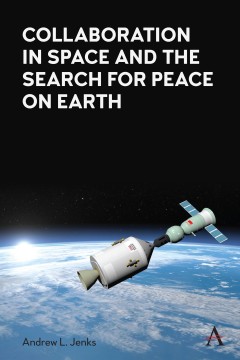Collaboration in Space and the Search for Peace on Earth
By Andrew L. Jenks
Anthem Series on Russian, East European and Eurasian Studies
Other Formats Available:
- About This Book
- Reviews
- Author Information
- Series
- Table of Contents
- Links
- Podcasts
About This Book
The book explores the era of space collaboration (from 1970 to the present). This period has been largely ignored by historians in favor of a focus on the earlier space race. The Apollo-Soyuz Test Project, a key program and catalyst for Détente, marked the transition to the new age of space collaboration, which continued through the Soviet Interkosmos missions, the Mir-Shuttle dockings of the early 1990s, and on through the International Space Station. Europeans, Americans, and Russians envisioned space collaboration as a way to reconfigure political and international relations.
The shift toward collaboration was a result of a new focus on safety, which displaced the earlier emphasis on risk-taking in the first phase of the space race, when military imperatives often overshadowed peaceful goals. Apollo-Soyuz (ignored by Cold War historians) was thus imagined as a test project for a docking mechanism that would allow a manned-capsule stranded in orbit to dock with another capsule and provide an escape hatch back to earth (it was actually inspired, in part, by the 1969 Hollywood film “Marooned” with Gene Hackman). The focus on engineering for safety grew out of the broader concerns about environmental degradation and nuclear war that in turn reflected a growing sense in the 1970s and 1980s of the dangers associated with excessive risk-taking in politics and engineering. Few historians or social scientists have examined the social construction of safety and its use in engineering and politics.
The book draws on the Russian Academy of Sciences Archives, Nixon and Reagan libraries and National Archives Collections, NASA headquarters library documents, and various memoirs and other published sources in English and Russian.
Reviews
Andrew Jenks’s Collaboration in Space and the Search for Peace on Earth challenges the dominance of the competitive paradigm in the history of early space-flight and turns our attention to international collaboration in space. Jenks’s analysis does not end in the deep of outer space. Still, it returns to Earth in order to shed light on political and societal implications resulting from the internationalization of efforts in space. - Darina Volf, A Postdoctoral Researcher at LMU Munich, Technology and Culture 63, no. 3 (2022), pp 885-86.
Author Information
Andrew Jenks is a Professor of History at California State University, Long Beach.
Series
Anthem Series on Russian, East European and Eurasian Studies
Table of Contents
List of Illustrations; Introduction: An Alternative History of the Space Age; 1. Handshakes in Space and the Cold War Imaginary; 2. Transnational Identity and the Limits of Cosmic Collaboration; 3. Androgynous Coupling, Technological Fixes, and the Engineering of Peace; 4. Securitization and Secrecy in the Cold War: The View from Space; Conclusion: Cooperation and ASTP’s Enduring Legacies; Bibliography; Acknowledgments; Index.
Links
Stay Updated
Information
Latest Tweets



